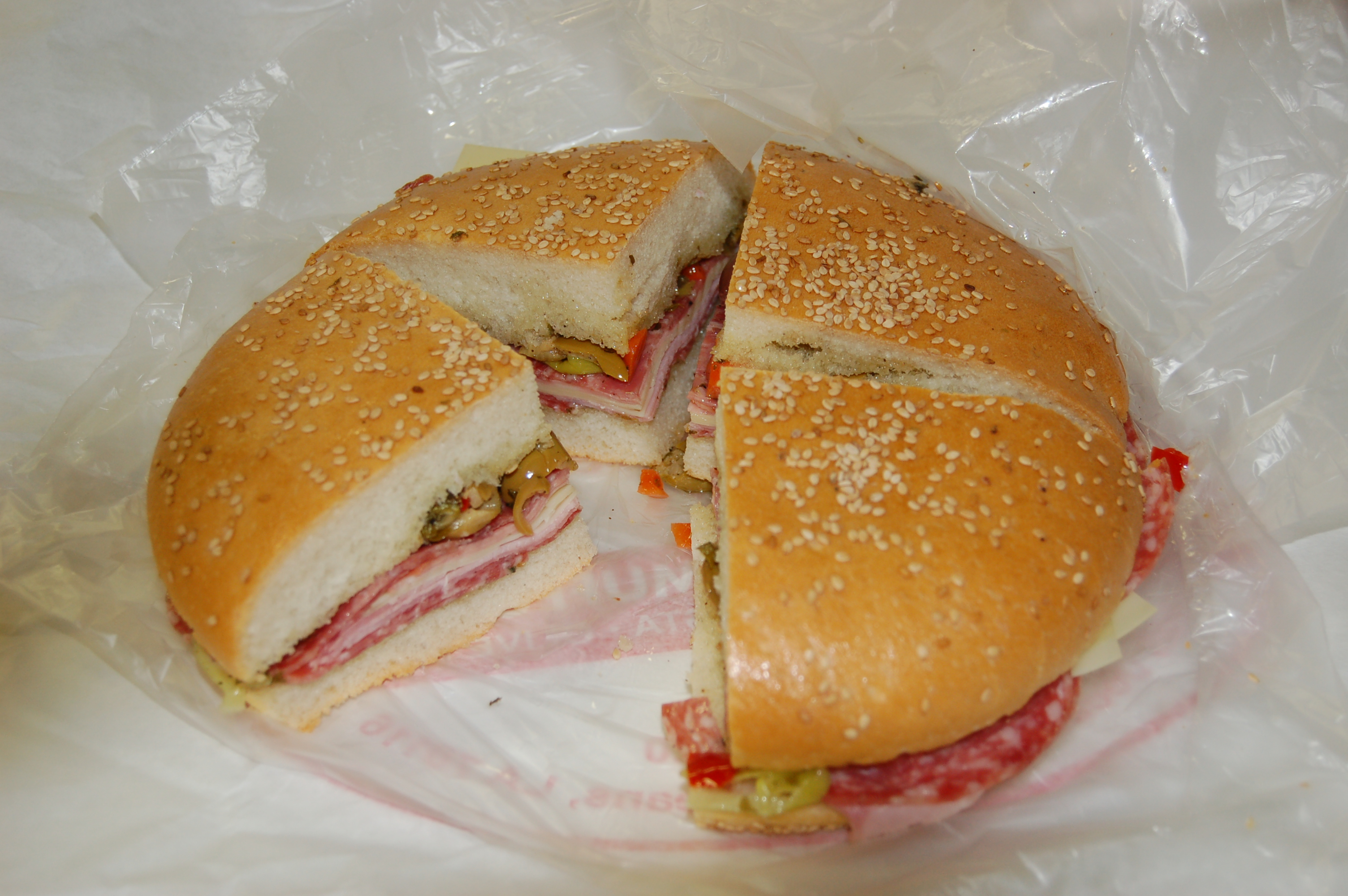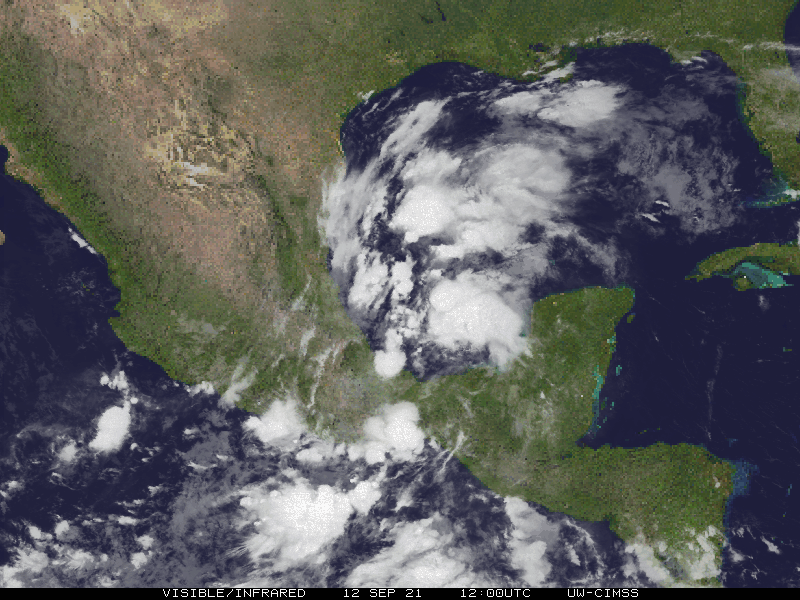|
Central Grocery
Central Grocery Co. is a small, old-fashioned Italian-American grocery store with a sandwich counter, located at 923 Decatur Street in the French Quarter of New Orleans, Louisiana. It was founded in 1906 by Salvatore Lupo, a Sicilian immigrant. He operated it until 1946 when he retired and his son-in-law Frank Tusa took over the operation. It is currently owned by Salvador T. Tusa, Salvatore's grandson, and two cousins, Frank Tusa and Larry Tusa. The store was one of many family-owned, neighborhood grocery stores during the early 20th century, when the French Quarter was still predominantly a residential area. Though tourists are more common in Central now, it has retained much of its old-world market feel. The Central sells not only the sandwiches as take-out or eat-in, but also the ingredients of the muffuletta—including olive salad by the jar—for people who want to make the sandwich at home. Because of the muffuletta, Central Grocery was featured on national tel ... [...More Info...] [...Related Items...] OR: [Wikipedia] [Google] [Baidu] |
Decatur Street (New Orleans)
Decatur Street is a street in the French Quarter neighborhood of New Orleans, Louisiana, USA that runs parallel to the Mississippi River. Decatur was formerly known as "Levee Street" or ''Rue de la Levée'', as it was originally the location of the levee. In 1870, when the river had altered its course, it was renamed "Decatur Street" in honor of the naval hero Stephen Decatur Jr. Decatur begins at Canal Street (the corresponding street up-river of Canal Street is Magazine), runs across the French Quarter , and terminates at St. Ferdinand Street in the Faubourg Marigny neighborhood. The most famous sights on Decatur Street are Jackson Square and nearby ''Café du Monde''. For about a century, ''upper Decatur Street'' (the portion closer to Canal Street) had many businesses catering to sailors visiting the port of New Orleans. In the late 20th century, it was redeveloped and became more upscale, with establishments such as the House of Blues. In the late 20th century, ''lower De ... [...More Info...] [...Related Items...] OR: [Wikipedia] [Google] [Baidu] |
Louisiana Creole Cuisine
Louisiana Creole cuisine (french: cuisine créole, lou, manjé kréyòl, es, cocina criolla) is a style of cooking originating in Louisiana, United States, which blends West African, French, Spanish, and Amerindian influences, as well as influences from the general cuisine of the Southern United States. Creole cuisine revolves around influences found in Louisiana from populations present there before its sale to the United States in the Louisiana Purchase of 1803. The term ''Creole'' describes the population of people in French colonial Louisiana which consisted of the descendants of the French and Spanish, and over the years the term grew to include Acadians, Germans, Caribbeans, native-born slaves of African descent as well as those of mixed racial ancestry. Creole food is a blend of the various cultures that found their way to Louisiana including French, Spanish, Acadian, Caribbean, West African, German and Native American, among others. History The ''Picayune Creol ... [...More Info...] [...Related Items...] OR: [Wikipedia] [Google] [Baidu] |
Restaurants Established In 1906
A restaurant is a business that prepares and serves food and drinks to customers. Meals are generally served and eaten on the premises, but many restaurants also offer take-out and food delivery services. Restaurants vary greatly in appearance and offerings, including a wide variety of cuisines and service models ranging from inexpensive fast-food restaurants and cafeterias to mid-priced family restaurants, to high-priced luxury establishments. Etymology The word derives from early 19th century from French word 'provide food for', literally 'restore to a former state' and, being the present participle of the verb, The term ''restaurant'' may have been used in 1507 as a "restorative beverage", and in correspondence in 1521 to mean 'that which restores the strength, a fortifying food or remedy'. History A public eating establishment similar to a restaurant is mentioned in a 512 BC record from Ancient Egypt. It served only one dish, a plate of cereal, wild fowl, and onion ... [...More Info...] [...Related Items...] OR: [Wikipedia] [Google] [Baidu] |
Restaurants In New Orleans
A restaurant is a business that prepares and serves food and drinks to customers. Meals are generally served and eaten on the premises, but many restaurants also offer take-out and food delivery services. Restaurants vary greatly in appearance and offerings, including a wide variety of cuisines and service models ranging from inexpensive fast-food restaurants and cafeterias to mid-priced family restaurants, to high-priced luxury establishments. Etymology The word derives from early 19th century from French word 'provide food for', literally 'restore to a former state' and, being the present participle of the verb, The term ''restaurant'' may have been used in 1507 as a "restorative beverage", and in correspondence in 1521 to mean 'that which restores the strength, a fortifying food or remedy'. History A public eating establishment similar to a restaurant is mentioned in a 512 BC record from Ancient Egypt. It served only one dish, a plate of cereal, wild fowl, and onion ... [...More Info...] [...Related Items...] OR: [Wikipedia] [Google] [Baidu] |
Italian-American Culture In Louisiana
Italian Americans ( it, italoamericani or ''italo-americani'', ) are Americans who have full or partial Italian ancestry. The largest concentrations of Italian Americans are in the urban Northeast and industrial Midwestern metropolitan areas, with significant communities also residing in many other major US metropolitan areas. Between 1820 and 2004 approximately 5.5 million Italians migrated from Italy to the United States, in several distinct waves, with the greatest number arriving in the 20th century from Southern Italy. Initially, many Italian immigrants (usually single men), so-called “birds of passage”, sent remittance back to their families in Italy and, eventually, returned to Italy; however, many other immigrants eventually stayed in the United States, creating the large Italian-American communities that exist today. In 1870, prior to the large wave of Italian immigrants to the United States, there were fewer than 25,000 Italian immigrants in America, many of them ... [...More Info...] [...Related Items...] OR: [Wikipedia] [Google] [Baidu] |
Italian-American Cuisine
Italian-American cuisine is a style of Italian cuisine adapted throughout the United States. Italian-American food has been shaped throughout history by various waves of immigrants and their descendants, called Italian Americans. As immigrants from the different regions of Italy settled throughout the various regions of the United States, many brought with them a distinct regional Italian culinary tradition. Many of these foods and recipes developed into new favorites for the townspeople and later for Americans nationwide. Traditional influences Italian-American food is based primarily on the culinary traditions of Southern Italian immigrants, although a significant number of Northern Italian immigrants also came to the United States and also influenced this style of cuisine to some extent. Most of these immigrants arrived in the United States during the late 19th and early 20th centuries, and during this time, many Italians coming from Naples and Sicily moved to large Amer ... [...More Info...] [...Related Items...] OR: [Wikipedia] [Google] [Baidu] |
Italians In New Orleans
Italians have had a presence in the New Orleans area since the explorations of the Europeans. Many Sicilians immigrated to New Orleans in the 19th century, traveling on the Palermo-New Orleans route by ship.Maselli and Candeloro, p7Maggi, Laura." ''The Times-Picayune''. January 29, 2012. Retrieved on August 28, 2014. The number of Italians who immigrated in the late 19th century greatly exceeded those who had come before the American Civil War.Huber, Leonard Victor. ''New Orleans: A Pictorial History''. Pelican Publishing, 1971. , 9781455609314. p56 Only New York City has a higher population of Sicilian-Americans and Sicilian immigrants than New Orleans. History Economics in Louisiana and Sicily combined to bring about what became known as the Great Migration of thousands of Sicilians. The end of the Civil War allowed the freed men the choice to stay or to go, many chose to leave for higher paying jobs, which in turn led to a perceived scarcity of labor resources for the plant ... [...More Info...] [...Related Items...] OR: [Wikipedia] [Google] [Baidu] |
French Market
The French Market (french: Marché français) is a market and series of commercial buildings spanning six blocks in the French Quarter of New Orleans, Louisiana. Founded as a Native American trading post predating European colonization, the market is the oldest of its kind in the United States. It began where Café du Monde currently stands and has been rebuilt and renovated a number of times. The market is included on the Louisiana African American Heritage Trail. Amenities and events Individual vendors purveyed many different fresh foods, including raw seafood, through the mid-20th century. The cafés and bars offer New Orleans crawfish and other seafood, Cajun food, Creole cooking, desserts, fruits, vegetables, and more. The French Market is also known for hosting some annual events including the French Quarter Festival and the French Market Creole Tomato Festival. The flea market is especially busy on weekends. Free musical events are often given in the French Market. Th ... [...More Info...] [...Related Items...] OR: [Wikipedia] [Google] [Baidu] |
Hurricane Nicholas
Hurricane Nicholas was a slow and erratic Category 1 hurricane that made landfall in the U.S. state of Texas in mid-September 2021. The fourteenth named storm, and sixth hurricane of the 2021 Atlantic hurricane season, Nicholas originated from a tropical wave that emerged off the west coast of Africa on August 28. The system developed into a tropical storm on September 12, with the National Hurricane Center (NHC) assigning the system the name ''Nicholas''. Nicholas gradually intensified initially, due to adverse effects of strong wind shear. However, late on September 13, Nicholas began intensifying at a faster rate, and at 03:00 UTC on September 14, Nicholas intensified into a Category 1 hurricane, with maximum sustained winds of 75 mph (120 km/h) and a minimum central pressure of . At 5:30 UTC on the same day, Nicholas made landfall in Texas at peak intensity. Afterward, the system gradually weakened, weakening into a tropical storm several hours ... [...More Info...] [...Related Items...] OR: [Wikipedia] [Google] [Baidu] |
Hurricane Ida
Hurricane Ida was a deadly and extremely destructive Category 4 Atlantic hurricane in 2021 that became the second-most damaging and intense hurricane to make landfall in the U.S. state of Louisiana on record, behind Hurricane Katrina in 2005. In terms of maximum sustained winds at landfall (), Ida tied 2020's Hurricane Laura and the 1856 Last Island hurricane as the strongest on record to hit the state. The remnants of the storm also caused a tornado outbreak and catastrophic flooding across the Northeastern United States. The ninth named storm, fourth hurricane, and second major hurricane of the 2021 Atlantic hurricane season, Ida originated from a tropical wave in the Caribbean Sea on August 23. On August 26, the wave developed into a tropical depression, which organized further and became Tropical Storm Ida later that day, near Grand Cayman. Amid favorable conditions, Ida intensified into a hurricane on August 27, just before moving over western Cuba. A ... [...More Info...] [...Related Items...] OR: [Wikipedia] [Google] [Baidu] |
The Today Show
''Today'' (also called ''The Today Show'' or informally, ''NBC News Today'') is an American news and talk morning television show that airs weekdays from 7:00 a.m. to 11:00 a.m. on NBC. The program debuted on January 14, 1952. It was the first of its genre on American television and in the world, and after 70 years of broadcasting it is fifth on the list of longest-running United States television series. Originally a weekday two-hour program from 7:00 a.m. to 9:00 a.m., it expanded to Sundays in 1987 and Saturdays in 1992. The weekday broadcast expanded to three hours in 2000, and to four hours in 2007 (though over time, the third and fourth hours became distinct entities). ''Today''s dominance was virtually unchallenged by the other networks until the late 1980s, when it was overtaken by ABC's ''Good Morning America''. ''Today'' retook the Nielsen ratings lead the week of December 11, 1995, and held onto that position for 852 consecutive weeks until the ... [...More Info...] [...Related Items...] OR: [Wikipedia] [Google] [Baidu] |
French Quarter
The French Quarter, also known as the , is the oldest neighborhood in the city of New Orleans. After New Orleans (french: La Nouvelle-Orléans) was founded in 1718 by Jean-Baptiste Le Moyne de Bienville, the city developed around the ("Old Square" in English), a central square. The district is more commonly called the French Quarter today, or simply "The Quarter," related to changes in the city with American immigration after the 1803 Louisiana Purchase. Most of the extant historic buildings were constructed either in the late 18th century, during the city's period of Spanish rule, or were built during the first half of the 19th century, after U.S. purchase and statehood. The district as a whole has been designated as a National Historic Landmark, with numerous contributing buildings that are separately deemed significant. It is a prime tourist destination in the city, as well as attracting local residents. Because of its distance from areas where the levee was breached during ... [...More Info...] [...Related Items...] OR: [Wikipedia] [Google] [Baidu] |




.webp/828px-Italian_Americans_(-s_per_state).webp.png)



.jpg)
